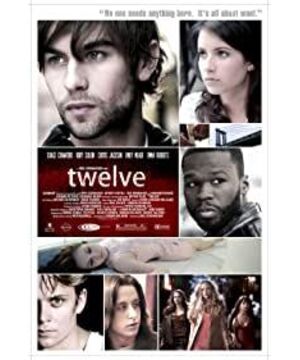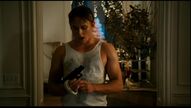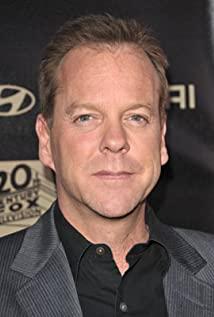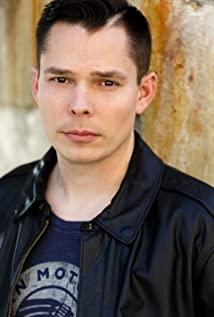Lao Qiao is good at dealing with black subjects. His films often portray the darkness, distortions and perversions of human nature, with fast and powerful rhythms, stylish and impactful pictures (this is due to his design major in college). "Twelve" is Lao Qiao's latest masterpiece, showing his consistent style and pursuit. The film was screened at the Sundance Independent Film Festival first, and was released in major theaters in North America after receiving positive reviews.
The theme of the film, as stated in the "Hollywood Report," is "a shocking tragedy about the destruction of young people in a corrupt life", and what is even more sad is that the story of the film is basically true. The protagonists of this film are from the Upper East Side of Manhattan (a wealthy residential area), and they are all high school students. At this age, what belonged to them was supposed to be a fancy years, but on the contrary: some made a living from drug trafficking after dropping out of school; some were psychologically distorted because they did not get maternal love, and ended up with gunfire; Some use beauty to manipulate one man after another; some do nothing all day, and fight for a small matter; some prefer to sell their bodies for the sake of taking drugs; some drunk driving and finally get into a car accident; some are addicted to Endless sex; some have been a good girl for a long time and decide to try for the first time and are ready to move; some take risks for the sake of drugs; some kill people without hesitation for the sake of drugs, etc. This is a sketch of adolescent social problems portrayed in this film. The United States once had a "lost generation" and a "beat generation". The generation portrayed in this film can be called a generation of nothingness. These people are wealthy, well-educated, and have superior living conditions created for them by their parents. However, they have no faith, no ideals, no passion, lack of family and friendship, and they are always lonely and empty. They live The passion and excitement in the game is the cloud of forgetting time and space created by cocaine and endless sex.
The film involves many characters and complex clues, so how to achieve a clear and orderly narrative becomes a problem. The solution strategy is: voice-over and beaded structure. When the camera slowly pushed toward each protagonist, the voice-over sounded at the right time, in a sad and helpless tone, succinctly outlined the basic situation of the protagonist, and guided the audience's understanding of the story and the relationship between the characters. For example, the voice-over at the beginning: "After White Mac’s mother died of breast cancer, their father and son moved here. The disease took her life and took away most of their savings. The air conditioner was broken, and the summer became extremely hot. . In White Mike’s room, all the boxes are placed in front of the closet so that he can see them. Maybe you know what’s going on, maybe not. But sometimes you don’t know what you do better.... …" It not only clearly introduces the protagonist of the story, but also sets the tone of sadness that is too thick to dissolve.
In order to link such a multi-information character and story, the screenwriter used a beaded structure, and the clue of the bead is drugs, and the beaded man is the protagonist White Mac. White Mike is a drug dealer. Through his drug trafficking activities, he connects the sentient beings in this circle of life. The first half is connected by White, presenting the life style. The second half is linked by two incidents, the shooting incident and the birthday party, which are obviously classic Hollywood features. As the birthday party was held, related people waited one by one to appear, "coincidence"-this classic drama technique once again exerted its infinite power. It happened that at this time, White learned that his brother had been killed, and he wanted to find his friend Jasmine to talk to, so he found this party; before he found Jasmine, he was accused by people there as a drug dealer, and this was Jasmine. I heard it; in order to find Jasmine as quickly as possible, he slammed open a door frantically and ran into the murderer who killed his brother. The evidence was the gun in his hand; White was knocked down and the murderer hurriedly wanted to escape; The elder brother of the party owner, who was mentally distorted due to lack of maternal love, couldn't stand the noise of the party, and fired his gun at people frantically. Finally, a rotten party instantly turned into a bloody shooting.
At the end of the film, the critical edge is put away, returning to the conventional routine of commercial films. The protagonist of the film, the drug dealer, was persuaded by his friend Jasmine to reflect on his depraved behavior, determined to correct evil and return to the right, and "live out his own splendor." When the story is over, the film goes unconventionally and inserts all the characters (whether dead or alive) in the film's past lives, as if they are nostalgia and remembrance. They look so young and healthy, they should have a sunny life.
View more about Twelve reviews











